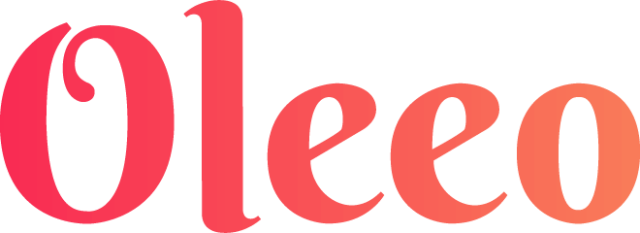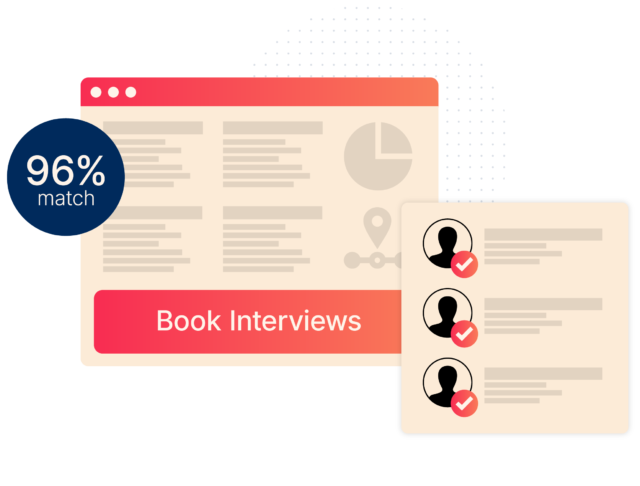How to Create an AI Governance Plan for Recruitment

Artificial Intelligence is being adopted in recruitment at pace. However, as organisations increasingly rely on AI, the need for robust governance becomes critical. AI governance is not just about ensuring ethical and responsible AI use, it’s also about fostering trust and transparency with candidates, recruiters, and stakeholders.
A well-crafted AI governance plan provides a framework for oversight, accountability, and ethical alignment. Importantly, it must also address when, if, and how candidates are permitted to use AI tools during their application process, ensuring fairness and clear communication at every step. This guide walks through the key steps to establish a comprehensive governance plan for recruitment.
1. What is AI Governance and Why Does It Matter?
AI governance is the system of rules, processes, and frameworks that guide the ethical and responsible use of AI. For recruitment, governance ensures that AI systems promote fairness, transparency, and inclusivity while mitigating risks such as bias, discrimination, and privacy violations.
Why Governance is Essential:
-
Trust and Transparency: Candidates need confidence in how AI influences hiring decisions.
-
Ethical Leadership: Ensures recruitment practices align with organisational values and societal expectations.
-
Regulatory Compliance: Prepares organisations for evolving legislation, such as the EU AI Act or US AI Bill of Rights.
-
Clarity on Candidate AI Use: Sets guidelines on how candidates may use AI tools, such as using AI to help with CV/Cover Letter generation or interview preparation software, ensuring fairness across applications.
Action Step: Start by defining your organisation’s principles for AI use and candidate communication, ensuring these align with broader business and regulatory goals.
Example in Practice: Begin with a collaborative workshop involving key stakeholders, such as HR leaders, recruiters, legal advisors and IT specialists. During this session:
-
Define core values around AI use, such as transparency, fairness, accountability and inclusivity. For instance, you might prioritise creating a process where every AI-driven decision is auditable and explainable to both candidates and internal teams.
-
Translate these values into specific guidelines. For example, if fairness is a priority, develop policies to audit AI tools regularly for bias and set expectations for how candidate-facing communications will address the role of AI in hiring decisions.
-
Identify the regulatory standards your organisation must meet, such as GDPR for data privacy or anti-discrimination laws, and ensure your AI principles integrate compliance with these requirements.
-
Develop a mission statement for AI governance, such as: “Our organisation uses AI to enhance efficiency and equity in recruitment while maintaining transparency and prioritising human oversight.” Share this statement across the organisation and include it in recruitment communications to align internal and external stakeholders.
By starting with a clearly defined set of principles, your organisation creates a foundation for AI use that is both ethical and aligned with long-term business goals.
2. Establish Core Governance Principles
A successful AI governance plan begins with a set of principles that reflect the organisation’s commitment to ethical and effective AI use. These principles should cover both internal processes and external interactions, such as candidate communication and the governance of candidate AI use.
Key Governance Principles:
-
Transparency: Ensure all stakeholders, including candidates, understand how AI is used in recruitment decisions.
-
Accountability: Assign responsibility for AI decisions, outcomes, and risks.
-
Fairness and Equity: Proactively address and prevent biases in AI systems and processes.
-
Privacy and Security: Protect candidate data and comply with all applicable data protection regulations.
-
Clarity on Candidate AI Use: Define when and how candidates may use AI tools, such as CV/Cover Letter generators or interview preparation tools, and communicate these guidelines clearly.
Action Step: Develop a governance charter that outlines these principles and includes a section addressing candidate AI use.
Example in Practice: Start by drafting a governance charter that acts as a central document for your organisation’s AI-related policies and practices. The charter should include:
-
Purpose and Scope: Clearly articulate why the governance charter is being created and its scope. For instance, “This charter establishes the principles and guidelines for the ethical and transparent use of AI in Recruitment processes, ensuring compliance with regulatory standards and alignment with organisational values.”
-
AI Governance Principles: Include a concise list of your core AI principles, such as transparency, accountability, fairness and privacy. For example, a principle of fairness might state, “AI tools will be tested regularly for bias, and corrective actions will be implemented if disparities are identified.”
-
Candidate AI Use Policy: Dedicate a section to how candidates can and cannot use AI during the application process. This could specify:
-
Acceptable uses, such as grammar checks or résumé formatting tools.Prohibited uses, such as fully AI-generated applications or fabricated qualifications.
-
Disclosure requirements, asking candidates to indicate any AI tools they have used and how they were applied in their application and what the disclosure means (i.e. is it a good or bad thing to use AI)
-
Roles and Responsibilities: Outline who is accountable for various aspects of AI governance. For example, specify that recruiters will be responsible for candidate communications and that an AI governance committee will oversee audits and compliance checks.
-
Review and Update Schedule: Commit to reviewing the charter regularly (e.g., annually) to ensure it remains relevant in light of technological advancements and regulatory changes.
-
Example Charter Section on Candidate AI Use:
“Candidates are encouraged to use AI tools to enhance their application, provided these tools do not misrepresent their qualifications. For example, using AI to format a résumé or improve grammar is permitted, but generating interview responses or fabricating credentials using AI is prohibited. Candidates must disclose any use of AI in their applications to maintain transparency and fairness in the evaluation process.”
By creating a governance charter with clear principles, expectations and responsibilities, your organisation sets the foundation for ethical and transparent AI use, fostering trust among both internal teams and external candidates.
3. Map the AI Lifecycle and Assign Responsibilities
AI governance spans every stage of the AI lifecycle, from system design to deployment and monitoring. Mapping this lifecycle ensures accountability and identifies areas where governance and communication with candidates are required. Implementing AI Platforms for Recruitment Strategy can help streamline these governance processes while ensuring compliance and fairness.
Stages of the AI Lifecycle:
-
Planning and Design: Embed fairness, transparency, and inclusivity into system objectives and design.
-
Data Handling: Audit training data for privacy, bias, and quality to ensure ethical outcomes.
-
Model Development: Validate any algorithms for accuracy, fairness, and inclusivity before deployment.
-
Deployment: Monitor system performance, ensure compliance, and communicate with candidates about AI use.
-
Monitoring: Continuously audit and evaluate the system’s impact, particularly regarding candidate experience and fairness.
Responsibility Matrix:
Assign specific tasks to teams such as AI leads, recruitment teams, legal and compliance officers, and hiring managers. Include a dedicated role or team responsible for managing and communicating candidate guidelines on AI use.
Action Step: Create a responsibility matrix to ensure that all lifecycle stages and candidate-related tasks are assigned to appropriate stakeholders.
Example in Practice: Begin by mapping the AI lifecycle for recruitment, breaking it down into distinct stages such as planning, data handling, model development, deployment and monitoring. Next, identify key stakeholders responsible for each stage and their specific responsibilities. A responsibility matrix helps clarify who owns which tasks and ensures accountability across the process, including the role of external technology vendors.
Steps to Build Your Responsibility Matrix:
1. Define the AI Lifecycle Stages:
Break the AI lifecycle into actionable stages. For example:
-
Planning and Design
-
Data Collection and Handling
-
Model Development and Testing
-
Deployment and Integration
-
Monitoring and Maintenance
-
Identify Key Stakeholders
Assign roles based on expertise, organisational structure and external partnerships. Key stakeholders might include:
-
AI Developers: Responsible for building and validating the algorithms.
-
Recruitment Teams: Ensure AI tools align with hiring goals and candidate expectations.
-
Legal and Compliance Teams: Oversee data privacy and adherence to regulations.
-
Governance Leads: Conduct audits and monitor ethical AI use.
-
Candidate Experience Teams: Manage communication and support for candidate-facing AI processes.
-
External Technology Vendors: Provide technical expertise, maintain the AI platform and ensure alignment with contractual agreements and organisational principles.
2. Allocate Responsibilities for Each Stage:
Use a RACI (Responsible, Accountable, Consulted, Informed) model to structure your matrix, ensuring external vendors are integrated effectively. For example:
-
Planning and Design: External vendors may be responsible for advising on the technical feasibility of requirements, while AI developers and governance leads ensure solutions meet ethical and operational standards.
-
Monitoring and Maintenance: Vendors may be responsible for providing updates, bug fixes and compliance documentation, while governance leads are accountable for monitoring the system’s ongoing ethical use.
3. Incorporate Candidate-Related Tasks:
Include governance tasks tied to candidates, such as managing guidelines on candidate AI use and monitoring candidate disclosures. External vendors may be responsible for ensuring system configurations adhere to these guidelines. For example:
-
Vendors provide tools for screening candidate job applications.
-
Legal teams and governance leads ensure these tools comply with privacy and fairness standards.
Example Responsibility Matrix Snapshot Including Vendors:
|
Lifecycle Stage |
Responsible |
Accountable |
Consulted |
Informed |
|
Planning and Design |
AI Developers |
Governance Leads |
Recruitment Teams, Vendors |
Legal and Compliance |
|
Candidate Communication |
Recruitment Teams |
Legal and Compliance |
Governance Leads |
Candidate Experience |
|
Data Handling |
IT Team, Vendors |
Legal and Compliance |
Recruitment Teams |
AI Developers |
|
Monitoring and Maintenance |
Governance Leads, Vendors |
Legal and Compliance |
AI Developers, IT Team |
Recruitment Teams |
|
Candidate AI Use Audits |
Governance Leads |
Legal and Compliance |
Vendors, Recruitment Teams |
AI Developers |
4. Engage Vendors in Governance Discussions:
To ensure external vendors align with your governance principles, integrate them into discussions about AI ethics, compliance and monitoring. For example:
-
Include a vendor representative in governance committee meetings.
-
Require vendors to provide bias audit reports, explainable AI documentation and compliance certifications as part of regular operations.
5. Review and Update Regularly:
Establish a schedule for reviewing the responsibility matrix, especially when new tools or vendors are introduced or regulations change.
4. Define and Communicate Candidate AI Use Guidelines
An often overlooked aspect of AI governance is defining how candidates may or may not use AI tools during their application process. Establishing clear guidelines not only ensures a level playing field but also enhances AI for candidate experience, making the hiring process more transparent and ethical.
Guidelines for Candidate AI Use:
-
Permitted Use: Candidates can use AI tools for tasks like enhancing their CV formatting, improving grammar, or refining cover letters. These tools should complement their genuine experiences and qualifications.
-
Prohibited Use: The use of AI tools to fabricate achievements, simulate interview responses, or fully generate application materials is not allowed. Such practices compromise the integrity of the hiring process.
-
Declaration of Use: Candidates should disclose if and how they’ve used AI in their application materials. This fosters transparency and ensures that evaluations consider the appropriate role of AI.
Communicating AI Guidelines to Candidates
-
Simple and Accessible Messaging: Ensure guidelines are clearly presented at key touchpoints, such as job postings, application portals, and candidate FAQs.
-
Transparency Tools: Provide a section in the application process where candidates can declare AI usage.
-
Educational Support: Offer resources to educate candidates about ethical AI use, encouraging them to use AI as a supportive tool rather than a replacement for their authentic input.
Action Step: Create a dedicated section in your recruitment communication to explain these guidelines, using candidate-friendly language and visuals where possible. This will encourage adherence while building trust in your recruitment process. Here is a template that you can copy and paste straight into your candidate communication.
5. Establish Transparent Processes
Transparency is central to AI governance. Candidates and stakeholders must understand how AI systems are used and how they align with organisational values and ethical standards.
Best Practices for Transparency:
-
Explainable AI: Ensure AI decisions, such as candidate rankings or suitability scores, can be explained in human terms.
-
Candidate Notifications: Inform candidates at key stages when AI is used, such as in application screening or interview scheduling.
-
Feedback and Appeals: Offer candidates clear channels to provide feedback or appeal decisions influenced by AI.
-
Clear AI Use Agreements: Share guidelines with candidates on AI’s role in recruitment and what is expected from them regarding AI use in applications.
Action Step: Audit your current communication processes to ensure they clearly explain AI’s role and address candidate concerns.
Example in Practice: Start by evaluating the touchpoints where candidates engage with your recruitment process. These include job postings, application portals, email communications, and candidate feedback mechanisms. The goal is to ensure your messaging is transparent, accessible, and addresses candidate concerns effectively.
Steps to Conduct the Communication Audit:
1. Map Candidate Touchpoints:
Identify all points where candidates interact with your recruitment process and AI tools. Common touchpoints include:
-
Job advertisements
-
Application portals
-
Pre-screening or assessment tools
-
Email updates regarding application progress
-
Feedback or appeal channels
2. Assess Transparency at Each Stage:
Evaluate the clarity of your communication about AI use. Look for areas where explanations are missing, overly technical, or inconsistent. For example:
-
Do job advertisements or application portals mention how AI tools are used in evaluating applications?
-
Are candidates informed about the role AI plays in decisions like shortlisting or scheduling interviews?
-
Is the language clear and free of technical jargon, ensuring accessibility for all candidates?
3. Engage Stakeholders, Including Vendors:
Include key stakeholders, such as recruitment teams, governance leads, legal advisors, and external vendors, in the audit. For example, ask external technology vendors to review messaging about AI tools they provide to ensure explanations are accurate and compliant with their functionalities.
4. Identify Candidate Concerns:
Use surveys, feedback forms, or candidate interviews to gather insights into their perceptions of AI in the recruitment process. Common concerns might include:
-
Whether AI decisions are fair and unbiased
-
How data is collected, used, and protected
-
What recourse candidates have if they believe an AI-driven decision was inaccurate
5. Develop a Communication Playbook:
Based on audit findings, create a playbook that outlines how to communicate AI’s role at each stage. This could include:
-
Standardised templates for candidate emails that explain AI’s role in screening or assessments
-
FAQ sections addressing common questions about AI use
-
Messaging that highlights fairness, transparency, and human oversight in AI-driven processes
Example Messaging Improvement:
Before:
“Our recruitment process uses AI to optimise efficiency.”
After:
“During the application process, we use AI tools to evaluate CVs against key criteria. This helps us streamline the screening process, but all decisions are reviewed by our recruitment team to ensure fairness. If you have questions about this process, please reach out via [feedback channel].”
Audit Results in Action:
After completing the audit, you might identify the need for clearer communication during specific stages. For example:
-
Add a banner to your application portal that explains how AI supports the hiring process.
-
Update rejection emails to include a line stating whether AI was involved in the decision and offer an opportunity for candidates to request clarification.
-
Train recruitment teams to address candidate questions about AI during interviews or follow-ups.
6. Monitor and Audit AI Systems
Governance doesn’t end at deployment. Regular monitoring ensures AI systems remain ethical, fair, and aligned with governance principles. This includes assessing both internal AI systems and candidate compliance with AI guidelines.
Key Audit Areas:
-
Bias Testing: Regularly test algorithms for unintended biases, particularly those that could disproportionately impact certain groups.
-
Performance Metrics: Monitor how AI tools improve recruitment outcomes such as diversity, Time-To-Hire, and candidate satisfaction.
-
Candidate Communication: Review whether candidates are informed about AI use and have access to clear, actionable guidelines.
-
Candidate AI Use Compliance: Monitor how candidates disclose their use of AI tools and assess whether these align with organisational guidelines.
Action Step: Schedule regular audits to review system performance, candidate feedback, and compliance with governance policies.
Example in Practice: Conduct quarterly reviews where recruitment teams, governance leads, and external vendors assess key metrics like algorithm accuracy, bias detection, and candidate satisfaction. For instance, include a review of candidate feedback surveys to identify concerns about transparency or fairness and use these insights to refine your AI tools and processes.
You can also automate your audits using tools such as Warden AI.
7. Train Stakeholders and Candidates
For governance to succeed, recruiters, hiring managers, and candidates must understand their roles and responsibilities regarding AI. Training ensures everyone engages with AI systems ethically and transparently.
Training Focus Areas:
-
For Recruiters and Hiring Managers: Provide training on ethical AI use, identifying biases, and addressing candidate concerns.
-
For Candidates: Offer resources to educate candidates about acceptable AI use and their rights in the recruitment process.
-
For AI Developers: Focus on embedding ethical principles, such as fairness and explainability, into system design.
Action Step: Develop training modules for internal stakeholders and create an educational guide for candidates.
Example in Practice: Create bite-sized learning sessions for recruiters and hiring managers on topics like bias mitigation, ethical AI use, and candidate communication. For candidates, provide a concise guide explaining how AI is used in the hiring process, acceptable AI use on their end, and their rights regarding transparency.
8. Adapt and Evolve
AI governance is not static. Regulations, technology, and societal expectations evolve, and your governance plan must keep pace.
Continuous Improvement Practices:
-
Regulatory Monitoring: Stay updated on new laws and standards affecting AI use in recruitment.
-
Feedback Loops: Use candidate and recruiter feedback to refine governance policies and communication strategies.
-
Periodic Reviews: Conduct annual reviews of your AI governance framework to identify gaps and opportunities for improvement.
Action Step: Appoint a governance lead to oversee ongoing improvements and ensure the plan evolves alongside organisational needs.
Example in Practice: Designate a senior team member, such as a compliance officer or HR leader, to monitor AI usage, track regulatory updates, and coordinate regular reviews of governance policies. This ensures your governance framework remains aligned with industry standards and addresses new challenges effectively.
AI Governance: Building Trust and Accountability
An effective AI governance plan ensures that recruitment systems are not only efficient but also ethical, transparent, and inclusive. By addressing candidate communication and guidelines for AI use, organisations can foster trust, promote fairness, and set a benchmark for responsible AI implementation.
Next Steps: Audit your current systems and candidate communication processes. Use this guide to build a governance framework that aligns with ethical principles and ensures clarity around both organisational and candidate AI use.



